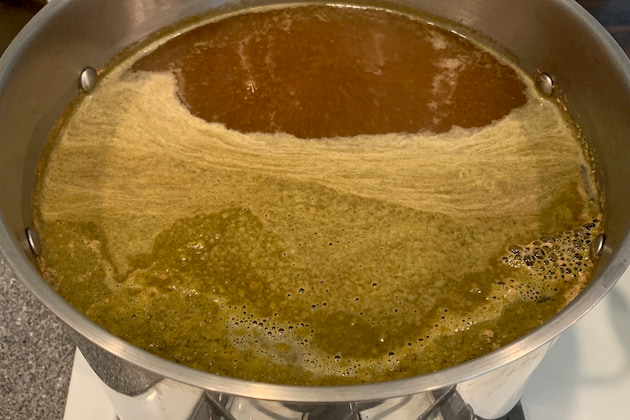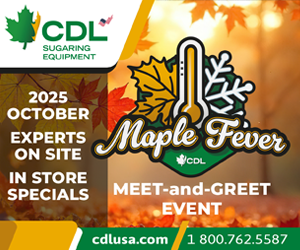Cornell Corner
Making bucks from the buddy
Cornell tries to find ways to add value to late season syrup
By AARON WIGHTMAN | JANUARY 7, 2021
VAN ETTEN, N.Y.—Does buddy syrup have potential high-value uses?
That is the subject of a new research project at Cornell University, where maple specialists are investigating a wide range of value-added options for this much maligned, late-season flavor.
Maple trees enter a period of dormancy at the end of each growing season.
This is an adaptation that allows trees to survive the cold of winter. An important aspect of that survival strategy is the management of energy reserves in the form of sugars and starches.
For most of the dormant season this mechanism of carbohydrate storage governs sap chemistry.
As a result, sap extracted during that time contains the mix of sugar and nutrients that create the classic flavors we expect in maple syrup.
However, as spring approaches, trees initiate other processes aimed at ending dormancy and initiating growth, including the activation of buds for leaf development.
This requires the transport of a different mix of nutrients and amino acids throughout the tree.
Therefore, different flavors are created from sap that is cooked and processed during this time period. We call these flavors “buddy” due to their association with bud swell.
To complicate matters, this transition in sap chemistry also coincides with warmer weather and higher microbial loads in sap collection systems which results in a greater degree of biologically driven changes in sap.
This biological activity further transforms buddy syrup. As a result, a wide spectrum of off-flavors with buddy characteristics develop at the end of the sugaring season.
These flavors range from sweet chocolate to bitter cabbage.
Buddy syrup is generally viewed as an undesirable waste product.
For most producers, the onset of buddy flavor is a signal that the sugaring season is over.
Because the flavor is not immediately evident in sap, buddy flavor is first detected in a finished batch of syrup.
When this happens, many of us opt to boil the last bit of sap, barrel it up for sale as processing grade, and shut down for the season.
Two alternative strategies have been deployed to contend with the buddy issue.
One is the development of simple tests to detect buddy chemicals in sap.
Using this test allows producers to avoid wasting energy boiling sap that will yield a low value product. Another strategy is to process the syrup in ways that mask the buddy flavor.
For example, syrup with light buddiness can be diluted and reboiled to promote additional caramelization.
Intensifying the caramel flavors may mask the buddiness enough to make a syrup suitable for higher value uses.
However, this approach only works well with slightly buddiness and not the intense flavors that quickly develop later in the season.
The Cornell Maple Program recently initiated a research project to identify potential high-value uses for buddy syrup.
The goal of this effort is to identify products and recipes with flavor profiles compatible with buddiness so that buddy syrup can be utilized as a value-added ingredient rather than a low-grade product or waste output.
Maple producers will benefit by having a more profitable market for buddy syrup, and may even extend the season to potentially produce more buddy syrup for these new uses.
The first phase of this effort involves the collection of a large number of buddy syrup samples.
The Cornell Sensory Program will then analyze these samples to create a lexicon and flavor map. This will allow for the creation of a grading system to sort out buddy syrup for different potential uses.
If you have buddy syrup on hand and would like to sell or donate a sample, please contact Aaron Wightman at arw6@cornell.edu.
Once this grading framework is established, maple program researches will generate a list of potentially compatible flavors for each category and begin new product development pilot studies.
New products will reach across a broad spectrum of product categories including alcoholic beverages, chocolate confections, and bath and beauty products.
Promising prospects from pilot trials will go through larger scale production trials and market tests in collaboration with other Cornell research partners and industry cooperators.
The buddy flavor evaluation tool and all product development information will be made freely available in the public domain at www.cornellmaple.com.
Funding for this project was provided through the USDA ACER Access and Development Program.


































